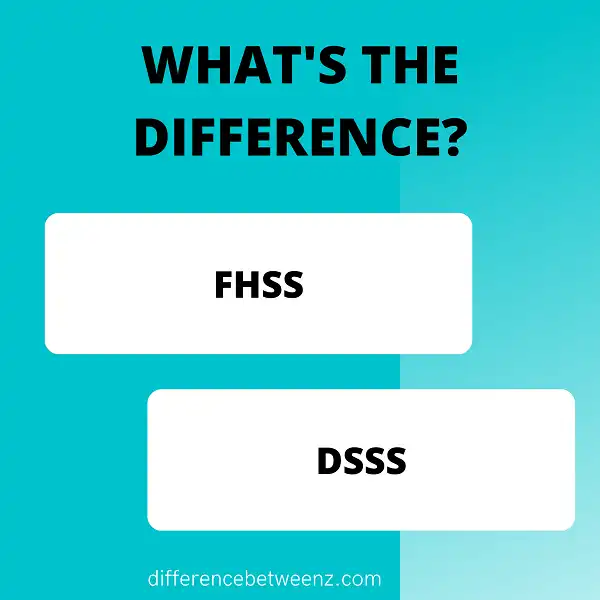There are two main types of wireless networking standards: Frequency Hopping Spread Spectrum (FHSS) and Direct Sequence Spread Spectrum (DSSS). Both have their own advantages and disadvantages, but what’s the difference between them? In this article, we’ll take a look at the key differences between FHSS and DSSS. We’ll also discuss when each technology is best suited for use.
What is FHSS?
FHSS is a multiple access technique that spreads the data signal over a wide range of frequencies. FHSS was originally developed for military applications but has since been adapted for commercial use. FHSS is used in Bluetooth and Wi-Fi technologies. FHSS works by making use of a pseudorandom frequency hopping pattern. The data signal is spread over a wide range of frequencies, and the receiver hops among these frequencies to follow the signal. FHSS is effective in reducing interference from other signals, and in avoiding detection by eavesdroppers. FHSS is also resistant to multipath fading, making it an ideal choice for mobile or portable applications.
What is DSSS?
DSSS is a modulation technique used in Spread Spectrum signal transmission. It is a digital sequence modulation technique where the original data signal is spread over a wide frequency range, using a complex code. The receiver uses the same code to demodulate the signal and recover the original data. DSSS is more resistant to multipath fading than other modulation techniques, making it well-suited for wireless communications.
DSSS can also be used to increase the capacity of a given channel by allowing multiple users to share the same frequency band. Each user is assigned a different code, which allows the receiver to discern between the different signals. DSSS is an efficient way to utilize the available spectrum, and it provides robustness against interference and fading.
Difference between FHSS and DSSS
There are two main types of spread spectrum modulation: frequency-hopping spread spectrum (FHSS) and direct-sequence spread spectrum (DSSS). FHSS is a form of spread spectrum communication in which the transmitter rapidly switches between different frequencies. This type of modulation tends to be more resistant to interference than DSSS. DSSS, on the other hand, transmits a signal using a wide range of frequencies at the same time. While this type of modulation is more vulnerable to interference, it can achieve higher data rates than FHSS.
Conclusion
FHSS and DSSS are two different types of wireless communication standards. They both have their own benefits and drawbacks, which we’ve outlined in this blog post. If you’re looking for a more reliable signal with less interference, then DSSS is the better option. However, if you need faster data rates and can tolerate some signal degradation, then FHSS is the way to go. Ultimately, it comes down to your specific needs and what type of environment you plan on using the wireless network in.


